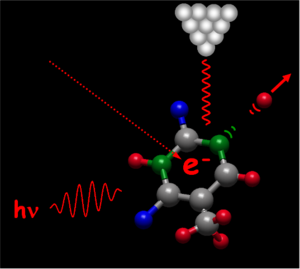Chaired by
CHAIR:
- PetraSwiderekE-Mail
- Universität BremenFachbereich 2 (Chemie/Biologie)Institute of Applied and Physical ChemistryBremenGermany
CO-CHAIR:
Professor Nigel Mason
Open University UK
Dates
22 - 27 November 2008
Location

Universitätszentrum Obergurgl, Ötz Valley, near Innsbruck, Austria
The Obergurgl University Centre is located at an altitude of 1940 metres, in the highest glacial village in the Tyrol, at the end of the Ötz Valley and surrounded by numerous three-thousand metre peaks.
Group transportation will be arranged from/to Innsbruck airport, via Innsbruck train station, on arrival and departure days.
Final Programme and List of Invited Speakers and Accepted Participants

The precise control over chemical transformations, both in terms of ‘tuning’ reaction products and allowing site specific chemical control is the subject of one of the most exciting and rapidly developing areas of modern science - introducing the potential for the creation of new materials and the development of new technologies with dramatic implications for advances in such fields as nanotechnology, quantum electronics and biophysics. Related research is driven by the emergence of new experimental tools and techniques (e.g. ultrafast lasers, electron induced processing and scanning tunnelling microscopes) each of which may provide control of chemical reactions with high selectivity. The first method uses laser pulses with a duration of a few femtoseconds, the timescale on which the atoms in a molecule move, to manipulate molecular wavepackets and control dissociation pathways; the second uses very low energy electrons to dissociate the molecular target at well defined reaction sites while the third methodology uses scanning tunnelling microscopes to manipulate single molecules absorbed on surfaces. Together these three techniques offer the unique ability to select and ‘tune’ chemical pathways allowing us unprecented control over chemical reactions.
This conference will bring together leading experts from the fields of electron-, laser-, and plasma-driven chemical processing. Despite their common goals and synergies between the different approaches (e.g in understanding molecular dissociation dynamics and fragmentation patterns) this is the first time in any international research forum that the different communities exploring routes to chemical control will be brought together at a single dedicated research conference. The aim of this meeting is therefore to (i) promote the awareness of a common research basis and (ii) to discuss new opportunities and directions such as facile processes for surface functionalization and nanostructuring that may be developed through collaboration between the different communities. This will include not only research on fundamental aspects of molecular fragmentation and chemical control but also highlight the applications in the areas of surface, material science and the ability to extend such knowledge to the study of biomolecular systems (e.g. in development of DNA as a functional engineering material).
Sessions will focus on:
· Chemical Control using ultrashort light pulses
· Chemical Control using low-energy electrons
· Chemical Control at the nanoscale with STM
· Plasma processing and nanofabrication
· Chemical control of biomolecules
Final Programme PDF (379 KB), |
Abstracts, Posters & Short Oral Contributions
There will be no short talks other than those listed on the final programme.
List of Accepted Posters PDF (133 KB)
Posters can be fixed with pins onto double-sided poster panels. Recommended poster size is 140 cm high x 100 cm wide. Use letters and drawings that can be read from approximately 100 cm distance.
Practical Information, Group Transportation and Accommodation
Detailed information on all practical aspects of the conference (such as access to site, registration; fee payments, accommodation, travel reimbursements and much more) is available from the Practical Information Guide. You are warmly invited to read it fully and carefully!
| Practical Information Guide [PDF, 305 kB] |
GROUP TRANSPORTATION
Two buses will be arranged on arrival day from Innsbruck railway station, via Innsbruck airport, to Obergurgl. The journey from the airport takes approximately 75 minutes (an hour and a half from the station).
Bus departure times - Saturday 22 November:
- from Innsbruck railway station: 15.45 and 18.15
- from Innsbruck airport: 16.00 and 18.30
Group transportation back to Innsbruck will be arranged in a similar way for the departure day, Thursday 27 November. Participants will be requested to sign up on the spot. Buses will be leaving at 8:00 and 9:00. Please make sure you book your tickets accordingly. Thanks!
Registration Form
For accepted participants and invited speakers only
All participants - including speakers & session chairs - are kindly expected to confirm their attendance (and, when applicable, to pay the conference fee) by filling in a Registration Form.
Closing date for registration & fee payment: 24 October 2008
Conference Fees
Fees | What the fees cover |
EUR 730 | conference, meals and twin OR double room |
EUR 520 | non-resident: conference, meals (no room) |
Financial Support
Some grants are available for young researchers to cover the conference fee and possibly part of the travel costs. Grant requests should be made by ticking appropriate field(s) in the paragraph "Grant application" of the application form.
ESF Contact
- AlessandraPiccolottoE-Mail
- Conference Officer
Phone: +32 (0)2 533 2023
Fax: +32 (0)2 538 8486
Please quote 08-261 in any correspondence.
Partnership
This conference is organised by the European Science Foundation (ESF) in partnership with the Fonds zur Förderung der wissenschaftlichen Forschung in Österreich (FWF)



